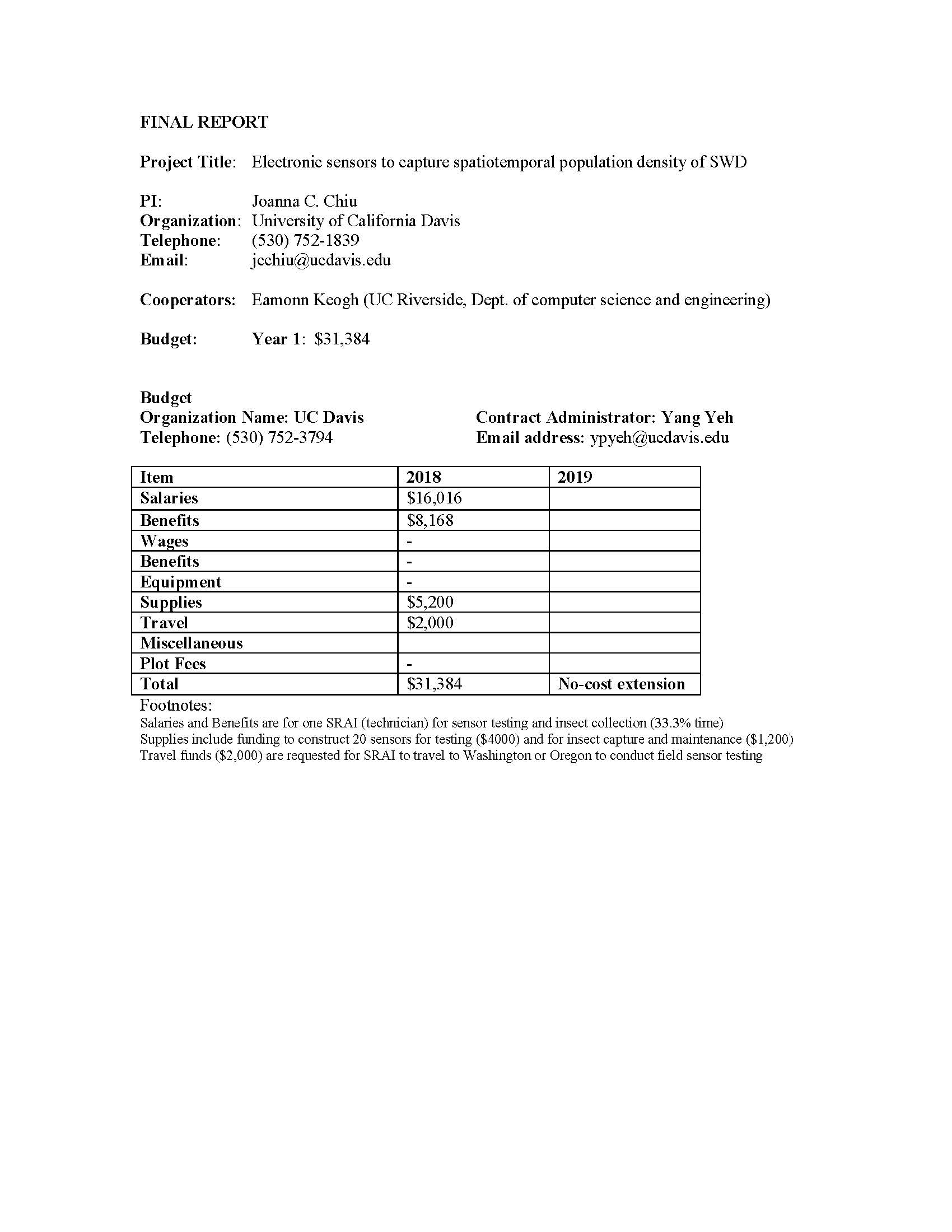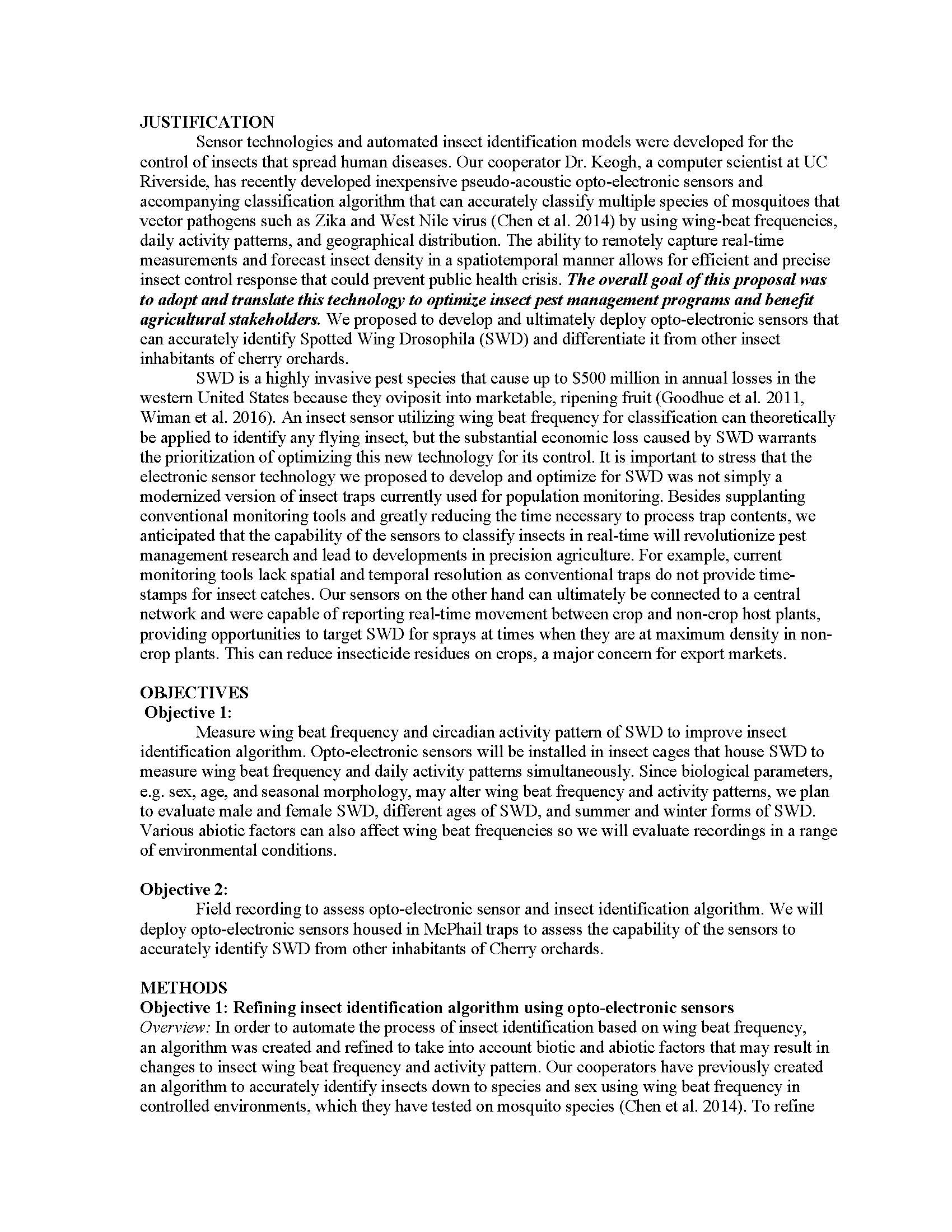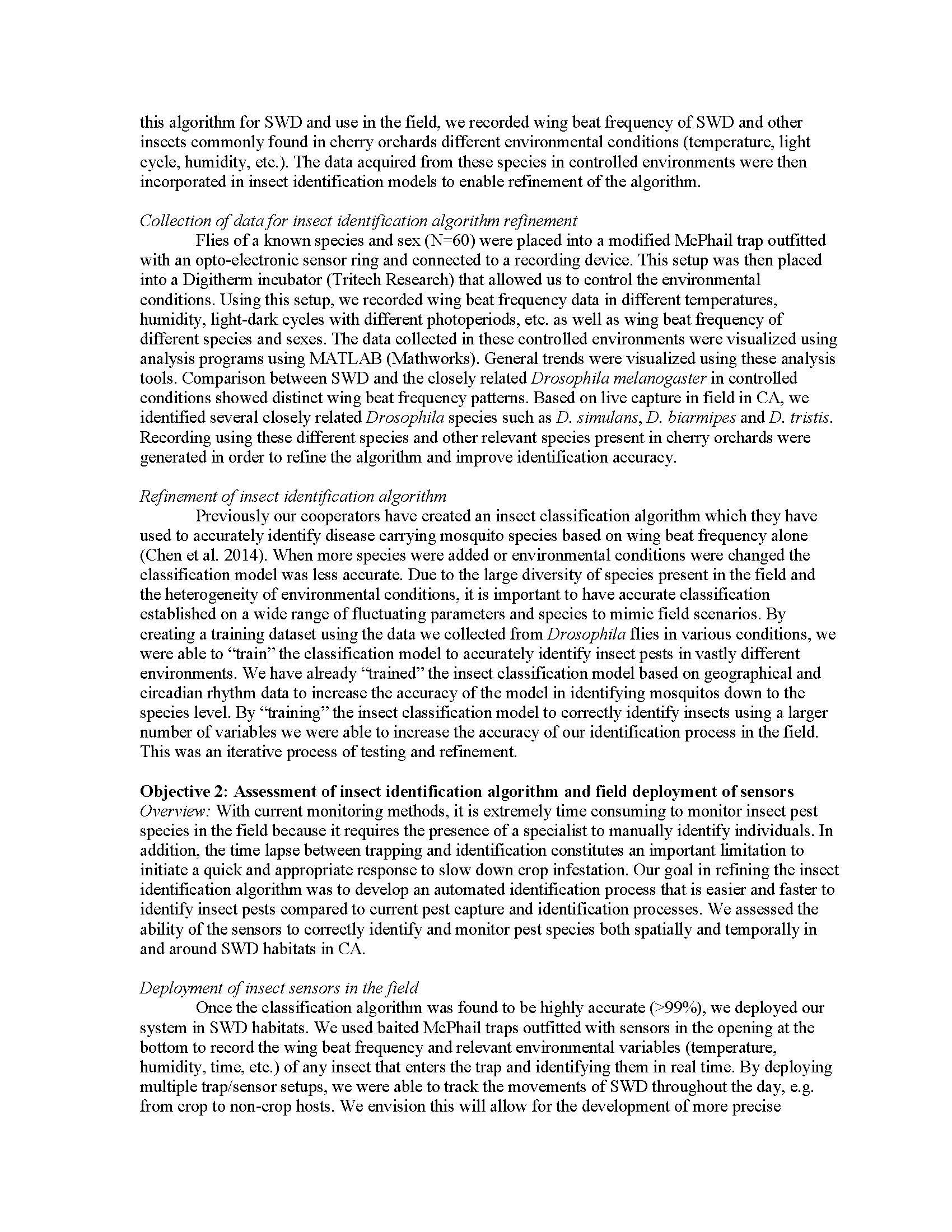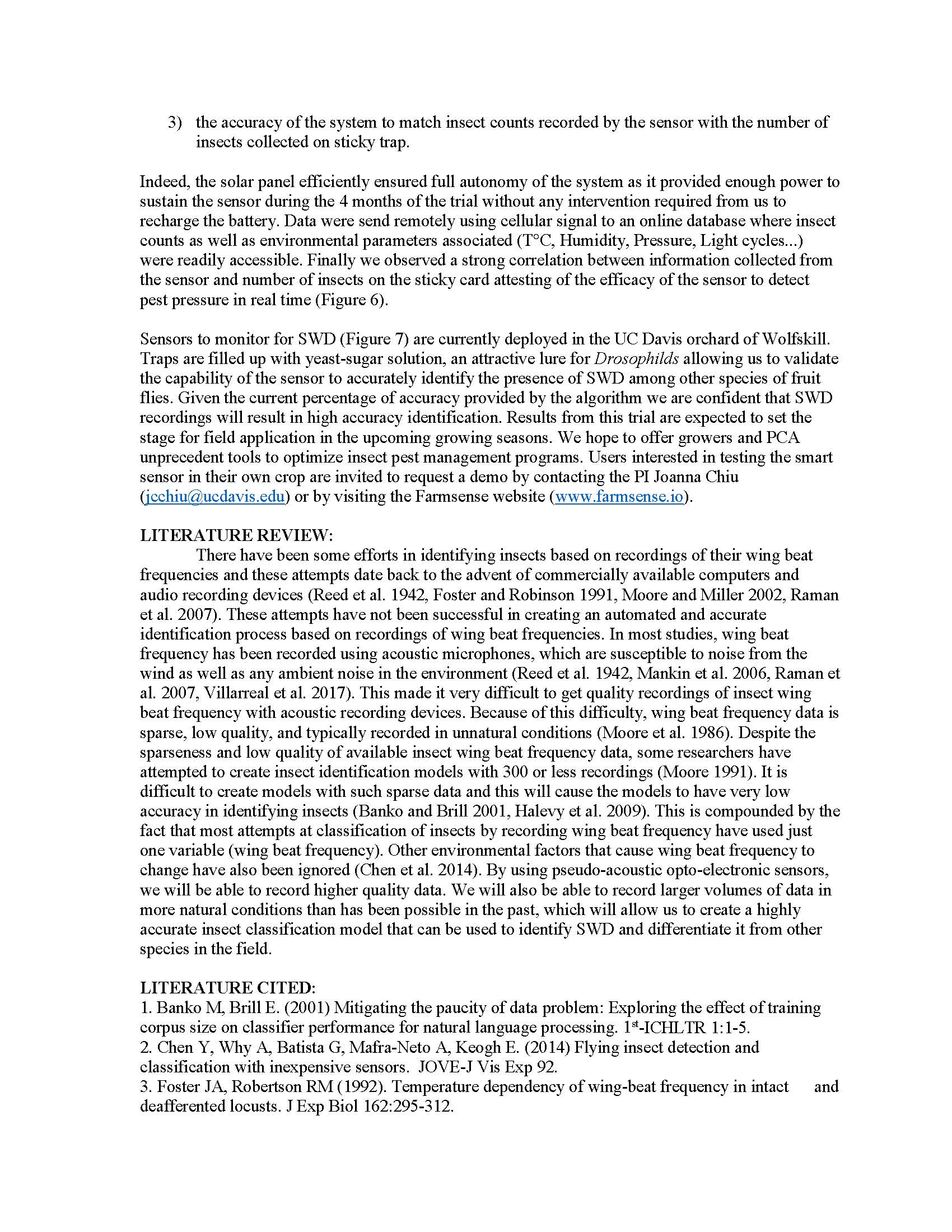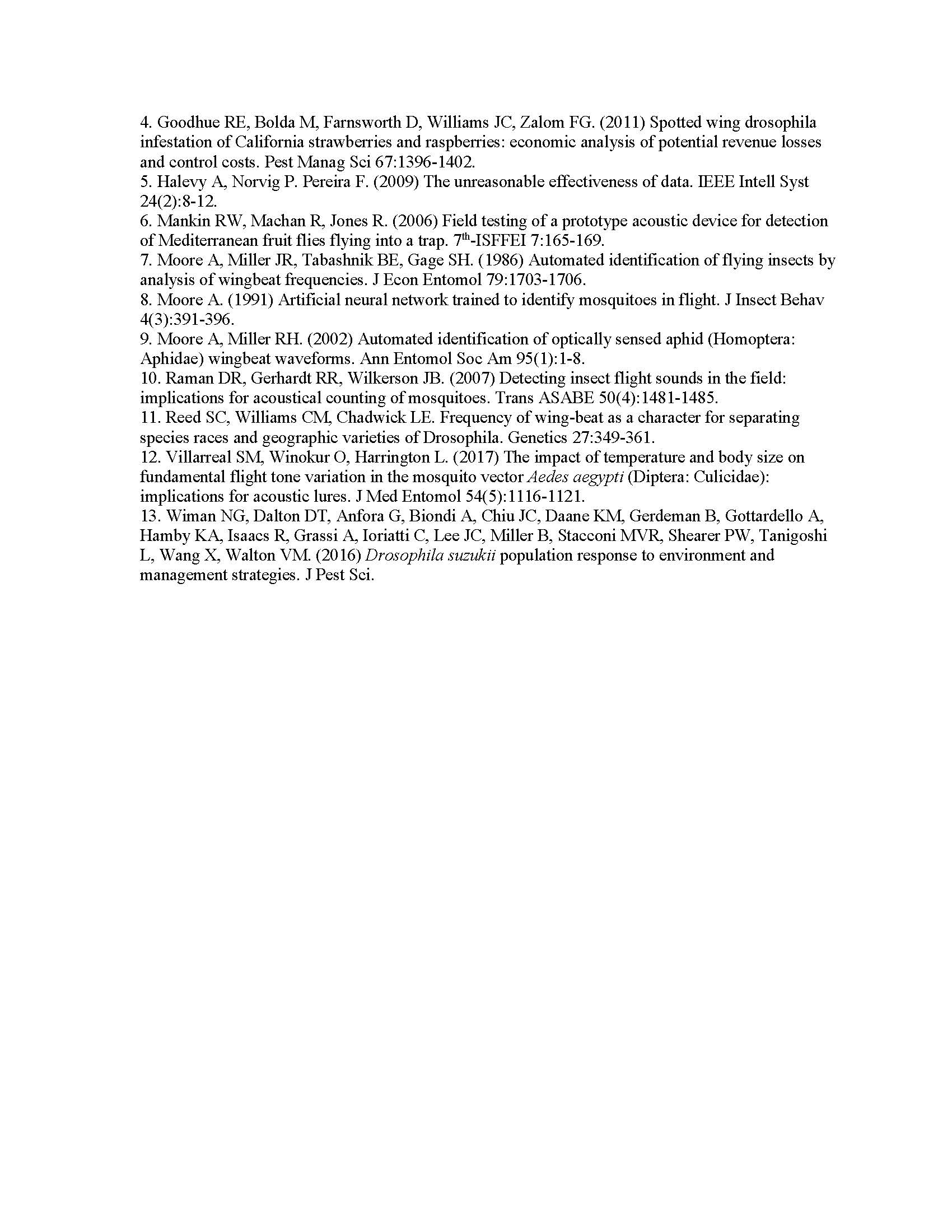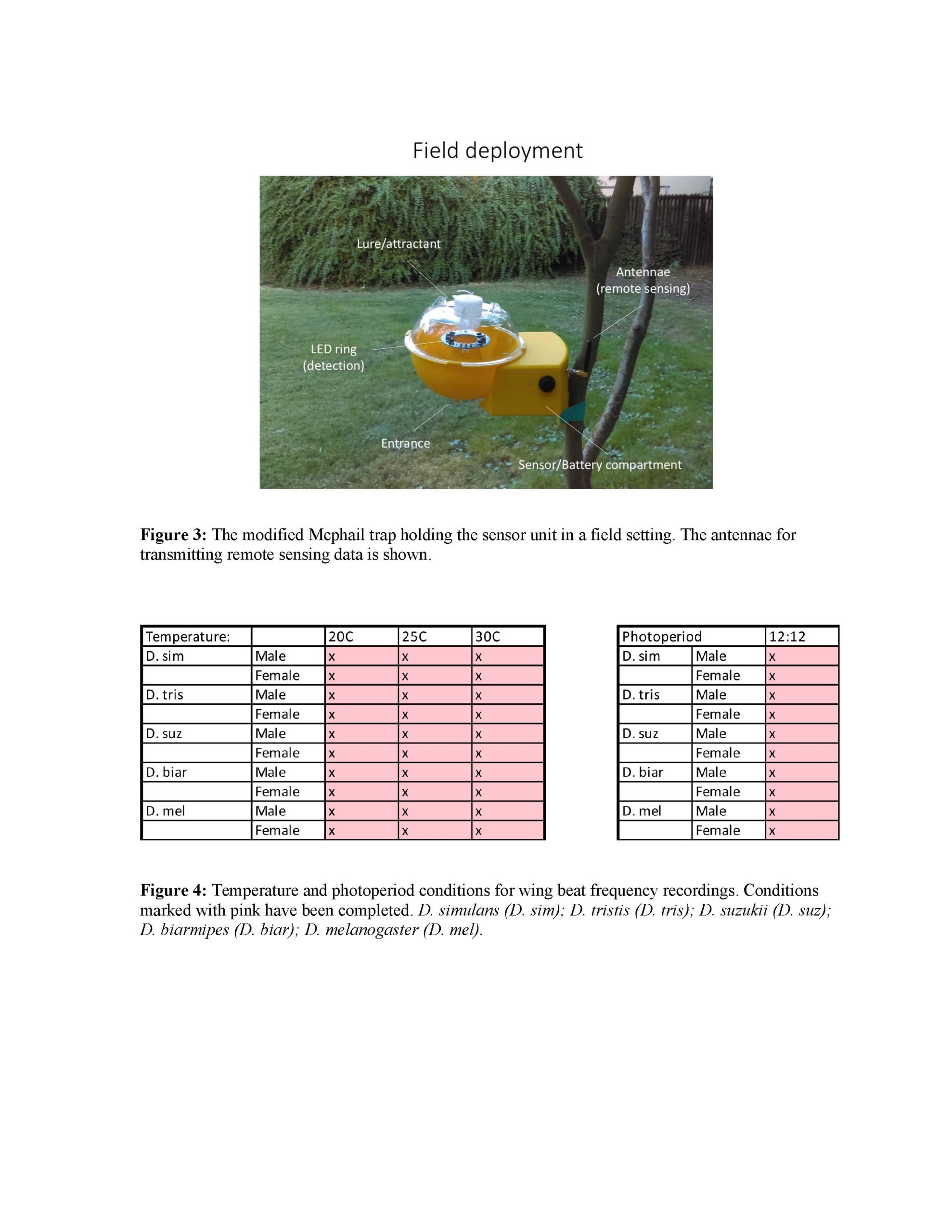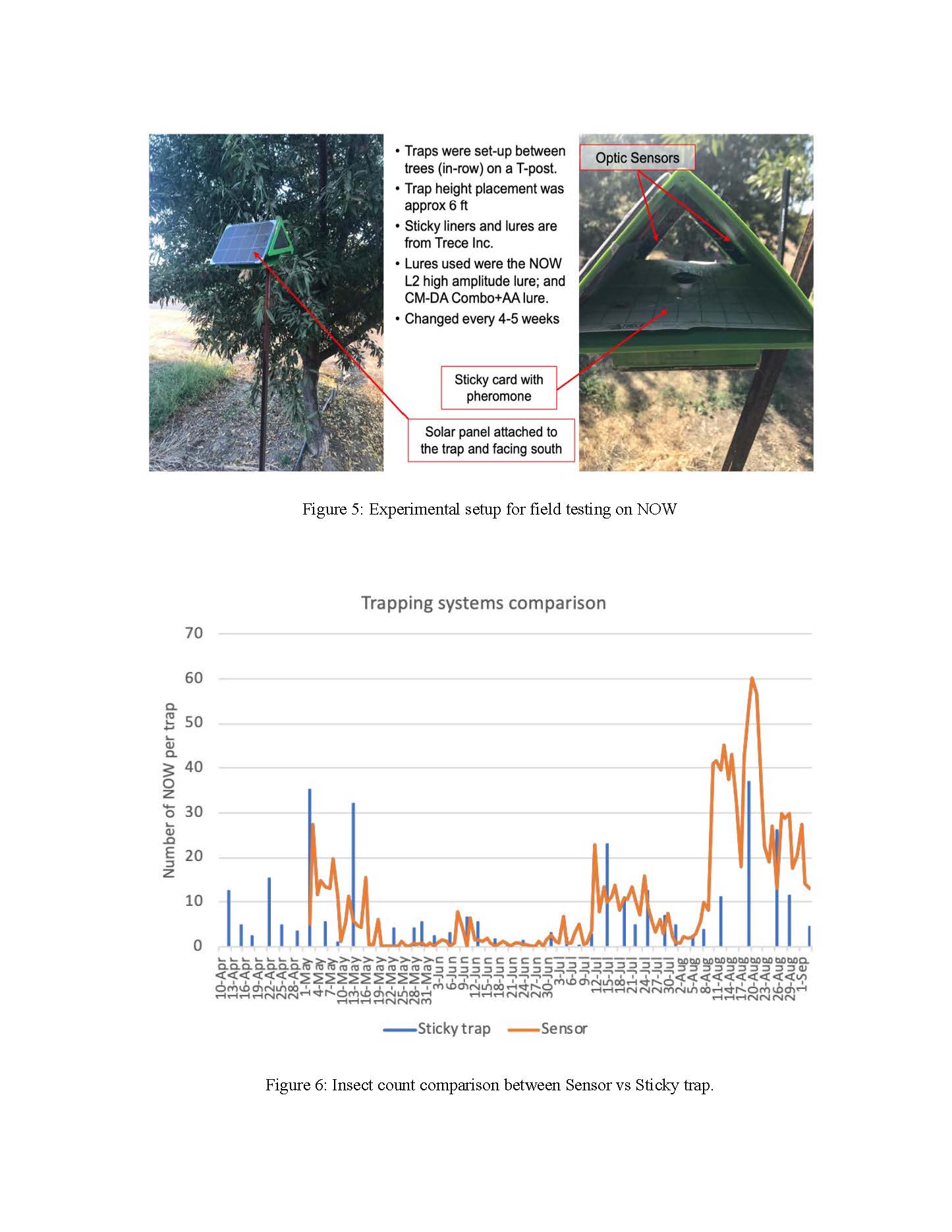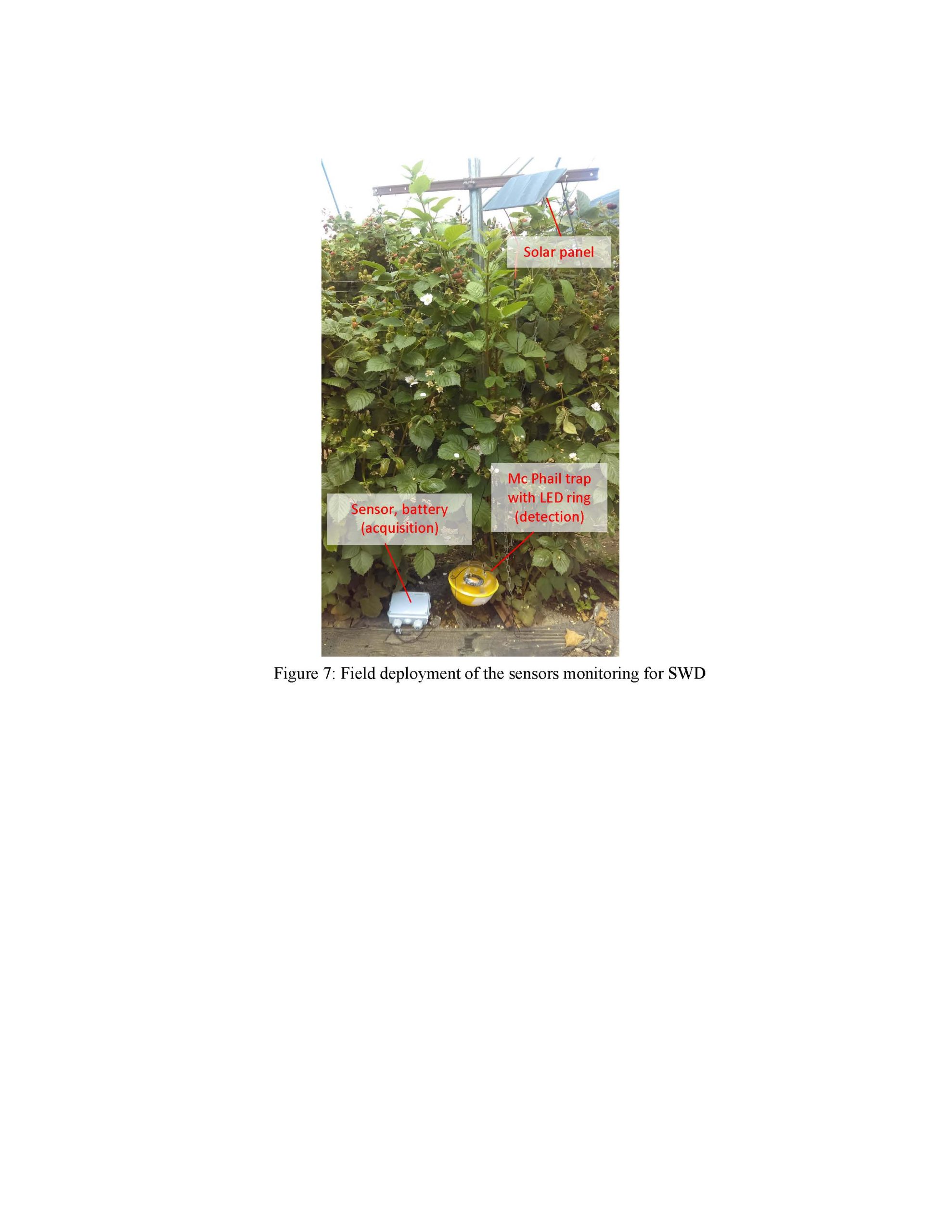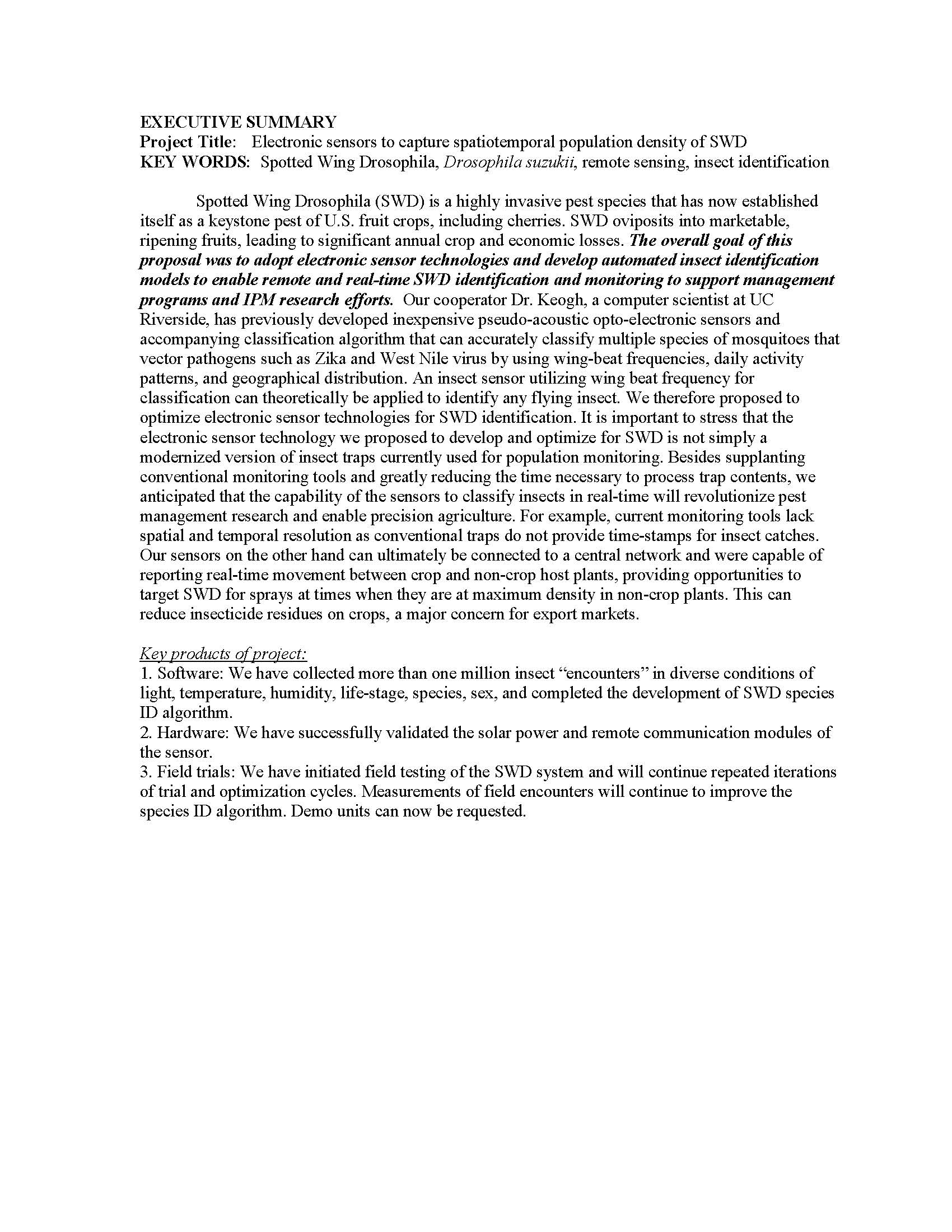Electronic sensors to capture spatiotemporal population density of SWD
Author: Joanna C. Chiu
Published: 2020
Summary: Spotted Wing Drosophila (SWD) is a highly invasive pest species that has now established itself as a keystone pest of U.S. fruit crops, including cherries. SWD oviposits into marketable, ripening fruits, leading to significant annual crop and economic losses. The overall goal of this proposal was to adopt electronic sensor technologies and develop automated insect identification models to enable remote and real-time SWD identification and monitoring to support management programs and IPM research efforts. Our cooperator Dr. Keogh, a computer scientist at UC Riverside, has previously developed inexpensive pseudo-acoustic opto-electronic sensors and accompanying classification algorithm that can accurately classify multiple species of mosquitoes that vector pathogens such as Zika and West Nile virus by using wing-beat frequencies, daily activity patterns, and geographical distribution. An insect sensor utilizing wing beat frequency for classification can theoretically be applied to identify any flying insect. We therefore proposed to optimize electronic sensor technologies for SWD identification. It is important to stress that the electronic sensor technology we proposed to develop and optimize for SWD is not simply a modernized version of insect traps currently used for population monitoring. Besides supplanting conventional monitoring tools and greatly reducing the time necessary to process trap contents, we anticipated that the capability of the sensors to classify insects in real-time will revolutionize pest management research and enable precision agriculture. For example, current monitoring tools lack spatial and temporal resolution as conventional traps do not provide time-stamps for insect catches. Our sensors on the other hand can ultimately be connected to a central network and were capable of reporting real-time movement between crop and non-crop host plants, providing opportunities to target SWD for sprays at times when they are at maximum density in non-crop plants. This can reduce insecticide residues on crops, a major concern for export markets
Keywords:

